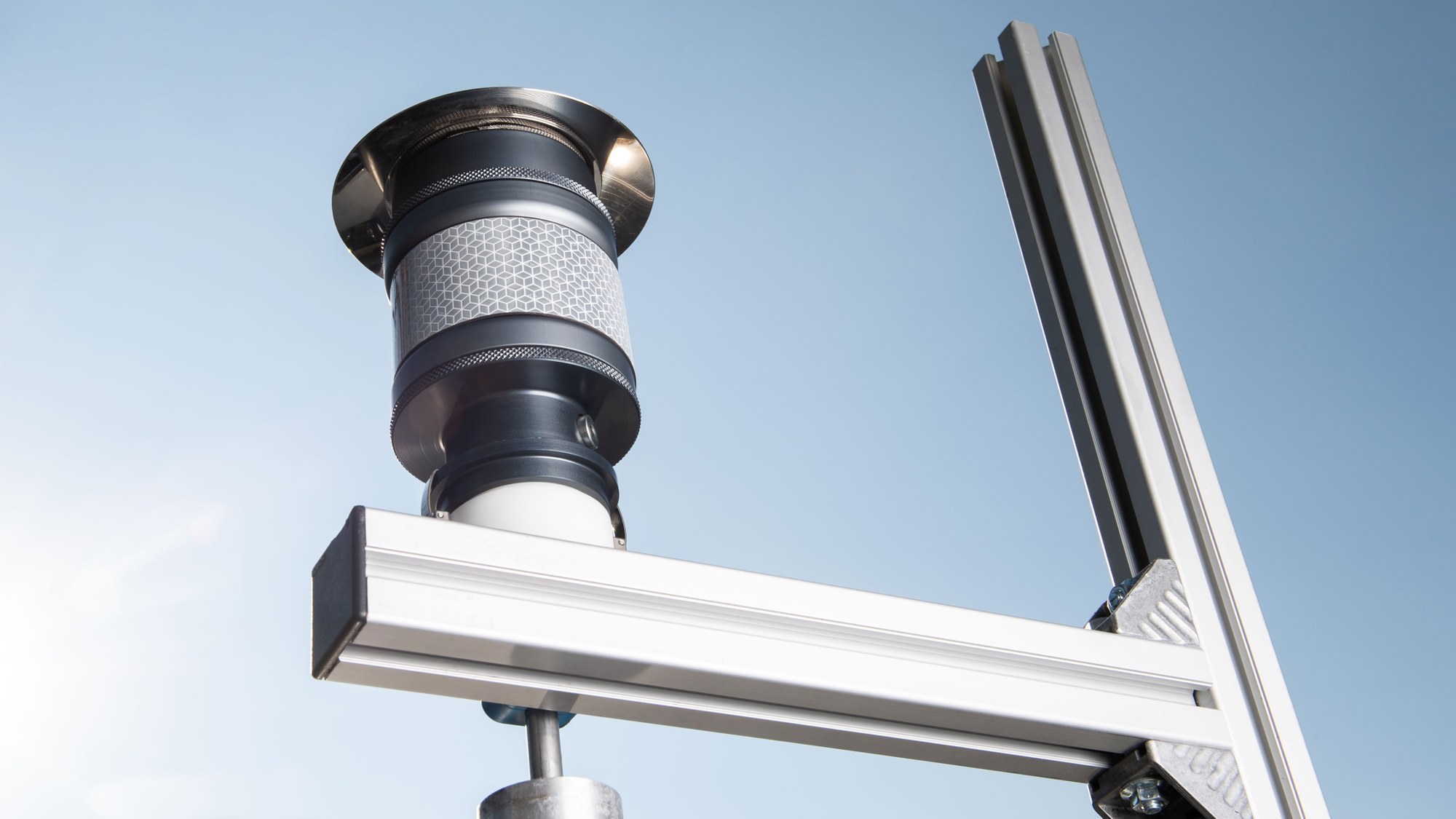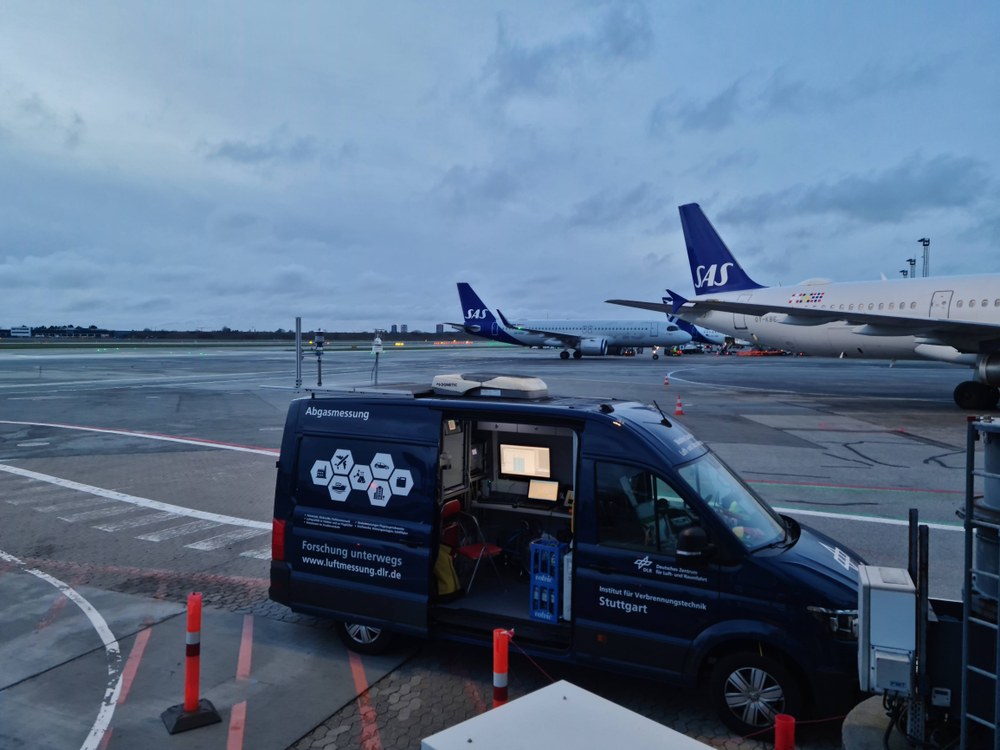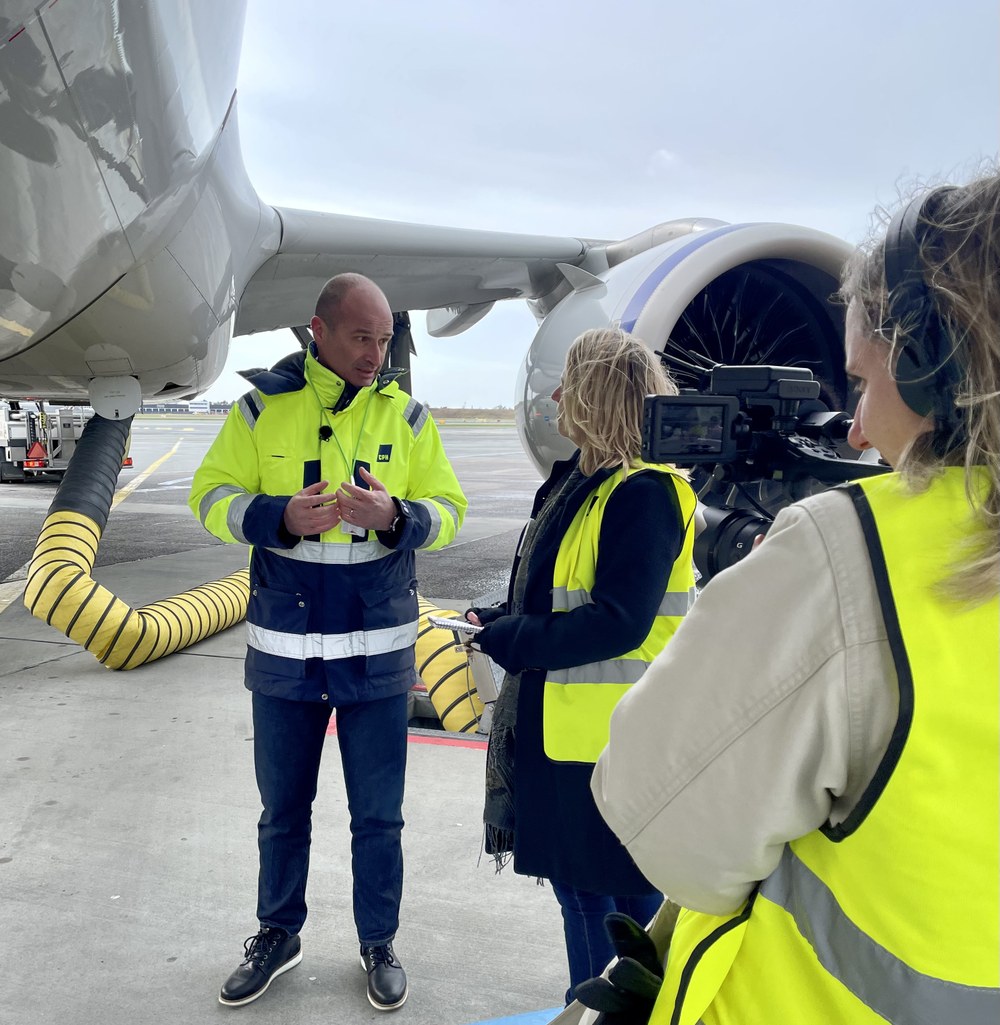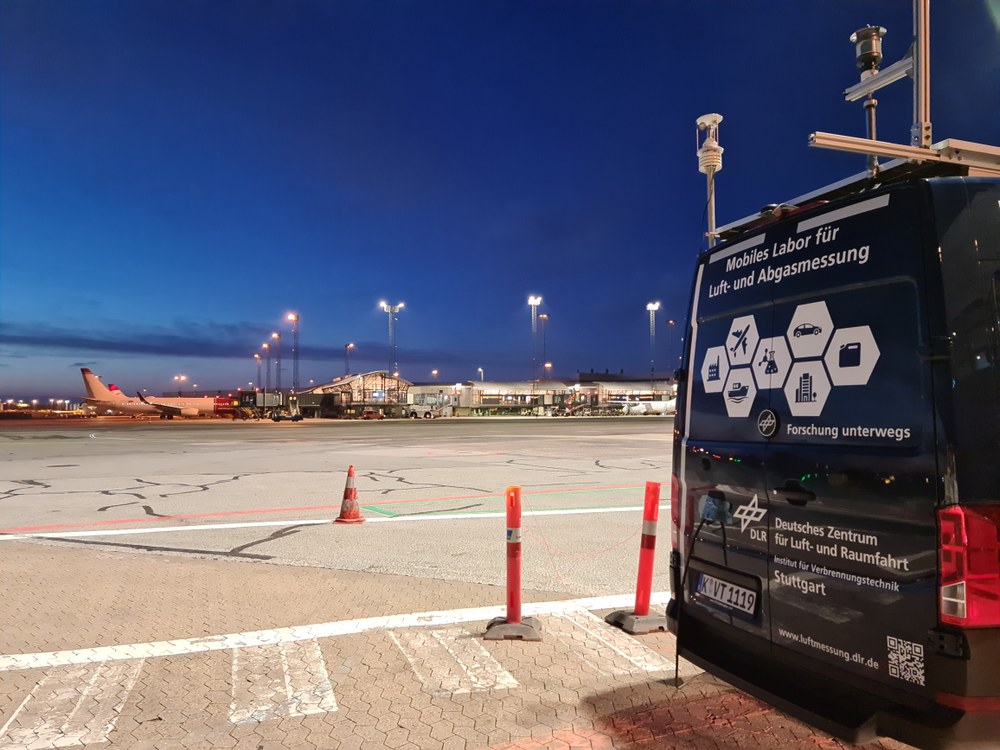A sniffing tour at the airport

The aviation industry has high hopes for Sustainable Aviation Fuels (SAF). Research suggests that these fuels could mitigate the climate impact of aircraft – with respect to both their carbon dioxide emissions and their non-carbon effects. But how do these fuels affect the air quality at airports? A team from the DLR Institute of Combustion Technology travelled to Copenhagen to find out.

It's a cold and windy January morning on the airport apron. Planes trundle past, smelling of kerosene. In the middle of the hustle and bustle is a blue truck sporting an array of measuring instruments on its roof. Tobias Schripp, Tobias Grein and Nina Gaiser are using this mobile air measurement laboratory from the DLR Institute of Combustion Technology to study the exhaust fumes sweeping across the apron over a period of four weeks. Their study is targeting one aircraft in particular: a Scandinavian Airlines plane that commutes daily between Copenhagen and Stockholm, fuelled with a mixture of 65 percent kerosene and 35 percent SAF.
Their measurements are part of the EU's ALIGHT project to develop solutions for a smart, climate-neutral energy supply for airports. However, while plane spotters are a common sight at airports, the three researchers stand out as the only 'plane sniffers'. When the three researchers explain exactly what they are measuring, they are always met with looks of disbelief. We are used to plane spotters at airports. But 'plane sniffers'? It is not only the airport staff who find this unusual, as project manager Tobias Schripp realises one day while trying to take measurements outside the airport grounds. Even the plane spotter he is talking to shakes his head in surprise.
But this incredulity always grows into curiosity. Once the chemist has explained in more detail how his team analyses the fine dust particles, it soon becomes clear even to the uninitiated: this research is something special. Many scientists study the ffects of fuel combustion on the atmosphere using simulations. Only a handful worldwide are able to study combustion processes in real time.
How is the origin of soot particulate determined?
Not only can the lab's equipment be used to detect and identify all particulate matter between five and 1000 nanometres in number and size in real time, it can also be used to combine this information with data from the weather station on the roof of the bus, including wind direction, temperature and humidity. In addition to particulates, the researchers are also examining the concentration of carbon dioxide and other emissions. "We assume that the composition of the exhaust cloud does not change significantly over the 200 metres from the engine to us," says Schripp. "By the time we measure it, it is only a few seconds old, so the ratio of carbon dioxide and particulate matter is still the same – regardless of how the wind may have diluted it. By measuring both, we can characterise and compare the exhaust gases." The researchers can determine which particulate matter was emitted by an aircraft as the particles are much smaller than those emitted by diesel vehicles. For comparison, a human hair has a diameter of approximately 40,000 nanometres – 40 times thicker than the largest of the measured particulates.

ALIGHT
The DLR team first compared the ratio of carbon dioxide and particulate matter in the exhaust clouds of several aircraft – both those using conventional kerosene and those using partial mixtures of SAF. Then they focused on their target aircraft. Measurements of nitrogen oxides provided additional information about combustion taking place within the engines. "We look for the exhaust plume peaks in the data acquired by our measuring instruments when our target aircraft is operating on the ground. We also assign these peaks to a wind direction, which we measure directly using instruments on the vehicle," says Tobias Schripp. The experts used the target aircraft's GPS, the wind direction and the peak events to assign the exhaust gases to the aircraft. The study also proved successful for DLR's project partners. "For me, one of the most exciting moments of the ALIGHT project was when, after months of planning, the Scandinavian Airlines aircraft moved around at Copenhagen Airport powered by a 35 percent SAF blend, while DLR measured the impact on local air quality," says Sabrina Jensen, Senior Project Manager for Sustainability at Copenhagen Airport and ALIGHT Project Manager.
This is not the first time that the DLR team, based in Stuttgart, has studied the emissions of aircraft using sustainable fuels. In 2015, 2018 and 2021, the team took part in the pioneering Emission and Climate Impact of Alternative Fuels (ECLIF) campaigns. However, these studies took place under comparatively controlled conditions. "The reality of flight operations is quite different, and we want to see whether the benefits of these fuels meet expectations under these realistic conditions," emphasised Schripp. He believes that the reduction in pollutants offered by SAFs may be quite different from what was expected. Since the fuels used have fairly similar soot-forming potential, a detailed, further evaluation will probably be required.
ALIGHT
The partners in this EU project include Copenhagen Airport, Scandinavian Airlines and BP. They are working on the implementation of climate-neutral solutions for airports. One key aspect is the supply of ground infrastructure with renewable energy, another is the introduction of sustainable aviation fuels (SAF). By 2025, an ALIGHT concept that can also be used by other airports will be developed.
An article by Anja Tröster from the DLRmagazine 172


